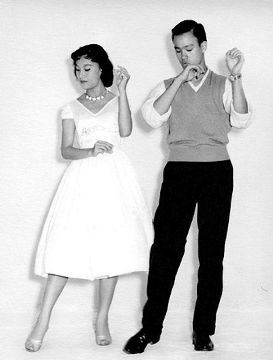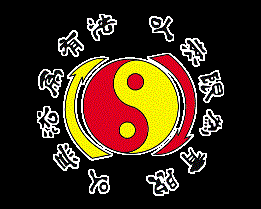 |
| (http://upload.wikimedia.org/wikipedia/commons/2/22 ()) |
A figure, blurred by his speed, smashed his fists through obstructive wooden planks, causing fragments of wood to splinter in all directions. A previously hampered path was finally cleared as the hindering planks were demolished by various martial arts techniques. Each impressive move to split the planks drew more attention than the last, and with every plank that was broken, another racial barrier was destroyed. Born in San Francisco in 1940 and raised in Hong Kong, Bruce Lee kicked his way to fame with the intent of breaking racial barriers to change the world's stereotypical view of Asia and its citizens. Bruce Lee was a martial artist and actor who eventually came to fame because of his breathtaking martial arts capability. He believed he would be able to promote his culture through his success in martial arts films. His dream of promoting his heritage came to a successful reality after multiple failures. Lee attempted to earn a spot in Hollywood as a martial artist, which was unsuccessful at first, simply because "Studio executives and producers didn't think a Chinese man would be accepted by American audiences" (Lee, Bruce (1940-1973)). However, Lee's determination eliminated quitting from his options, leading to Hollywood chasing after him. Lee's diversity, positive influence and determination resulted in his ability to succeed and inspire people in a positive way, making him a hero.
 |
| (https://s-media-cache-ak0.pinimg.com/736x/7c/cd/12 ()) |
Bruce Lee managed to adopt a diverse perspective as a result of living in multiple environments, making him "a stylish paradox: a mix of two cultures who called both America and Hong Kong home" (Bruce Lee, super-influencer). After high school, Lee traveled abroad from Hong Kong to Washington State to study philosophy. In the duration of his studies, he observed that the majority of non-Asians were ignorant, if not completely unfamiliar with Asian culture. Lee used this chance to both embrace diversity and make money by teaching Chinese martial arts to people in America. Though Americans started to take interest in what Lee had to offer, the Chinese community was not pleased. "In Hong Kong, kung fu was a secret Chinese weapon and was never taught to any non-Chinese person, but Bruce welcomed ANYONE who was interested in learning what he had to teach" ("Bruce Lee."). Despite China's biased opinion on foreigners, Lee saw the potential in creating a more varied society by cultivating a diverse environment. Lee's effort to widen America's perspective of the world by educating them on Chinese culture was also a significant contributor to breaking racial barriers. Lee took it a step further by bridging the gap where the racial barriers used to stand by letting his students experience Chinese culture firsthand. "He would go out with the students for lunch at Chinese restaurants after Sunday morning workouts, or take them to a Chinese film in Chinatown. Bruce taught them Chinese culture as well as providing friendship and a social atmosphere" (Lee, Bruce (1940-1973)). Lee's actions to bridge this cultural gap mitigated the racial tensions between Americans and Chinese, opening up their perspectives to accept the benefits of diversity. One benefit of Lee's open perspective was the ability to find new methods of self improvement. Best known for his impeccable martial arts capability, Lee shows that mastery of the skill does not come from knowledge or practice in one simple area. Instead, a variety of components would contribute to a more stunning product. His one surprise component: Dance. "Lee was the 1957 Hong Kong cha-cha champion" (Bruce Lee, super-influencer). Dance played a major role in guiding Bruce Lee's swift and graceful moves when performing martial arts. A diverse focus in multiple components will ultimately produce a more appealing outcome. Lee's diversity is an influence that widened the perspectives of people around the world to embrace diversity in return for the benefits it provides.
 |
| (http://www.psdtc.com/_borders/Jeet.Kune.Do.gif ()) |
When Bruce Lee came to fame, he influenced various aspects of society in positive ways. First of all, Lee influenced a healthy lifestyle using his impressive physical appearance and his promotion of physical fitness. According to Lee, traditional martial arts were not effective enough because it did not emphasize the importance of practicality, speed, flexibility and strength training ("Bruce Lee."). He combined these elements into his own style, Jeet Kune Do, using physical conditioning as means of improvement. This approach developed into the popular sport, MMA, which is found to be both engaging and physically active. Dana White, president of the Ultimate Fighting Championship, says "Bruce Lee is 100 per cent the father of mixed martial arts," (Bruce Lee, super-influencer). Mixed Martial Arts (MMA) is known to be a physically intensive sport, which requires a great deal of training and physical conditioning. Lee combined physical conditioning with Chinese martial arts to create a more stunning performance and improved physical fitness. The emphasis on physical fitness, along with the impressive physiques of those who partake in physically intensive activities, influences Americans to stay physically fit to maintain a healthy lifestyle. In addition to influencing a healthy lifestyle, Lee also encouraged the world to take pride in their individuality. During Lee's time, Asian Americans' capabilities were disregarded because of their physical appearances. Even in the entertainment business, "Roles for Asian Americans were either stereotypical and demeaning, or small and forgettable, or a combination of both" ("Bruce Lee."). Bruce Lee was eager to change the way Asian Americans were portrayed in pop culture and refused to act in any roles that were condescending towards Asians. After Hollywood rejected Lee for his race, he traveled back to Hong Kong and produced three widely successful movies that topped the charts of Asia's entertainment industry. Lee's charismatic capability to captivate his audiences caught the attention of Hollywood producers, making them realize they were completely blinded to greatness by racism. Hollywood finally opened their closed gates to diversity. Warner Brothers Entertainment decided to co-produce Enter the Dragon, the film which brought Lee to fame in America, with Hong Kong film company, Golden Harvest. "Enter the Dragon was the 1st time a U.S and Hong Kong film company had come together to make a film. This was the film that brought Bruce worldwide fame and made him the world's first Asian superstar" ("Bruce Lee."). Lee making it into the American entertainment industry broke another barrier that had previously hindered Asian Americans from success. His ability to appeal to the audiences of all ages and ethnicities landed him a place in Hollywood, marking a major milestone in Asian American history. "As the first Asian international action star he smashed the Western stereotype of the Chinese coolie, and provided reason for a whole generation of young Asians, as well as other minorities, to be proud of their heritage. Comedian Margaret Cho has said it was seeing Lee that made her realize her own possibilities in life" (Bruce Lee Remembered). Bruce Lee proved that race does not dictate success. His success raised the limits for minority races and encouraged them to pursue their ambitions. Society owes a debt to Bruce Lee for influencing a healthy lifestyle and for breaking racial barriers, paving the way to success for people of all races.
Bruce Lee is a hero for using his diversity and positive influence to succeed and become an inspiration. Bruce Lee's interactive presentation of his culture to different perspectives was seen as an effort to bridge a cultural gap, providing potential for the world to expand their points of view and interests. This was especially influential to Asia, where "Lee was seen as a symbol of decadent Western influence" (Bruce Lee Remembered). In addition to bridging racial gaps, Lee managed to prove that race does not dictate personal ability. Though he was ridiculed for having a vision of becoming the first Asian international action star, he pushed past the racism with his strong determination and diverse methods of improvement to win over the audiences of the America, proving those who criticized him wrong. By completely defying the biased standards America set for those who could make it to fame, Lee managed to influence the world's perspective with his diversity, opening up possibilities for anybody with a hard work ethic to attain success. Today, "Stars such as David Carradine, Chuck Norris, Jean-Claude Van Damme, Steven Seagal, and fellow Hong Kong martial artist Jackie Chan would follow his example, making Lee the father of an enduring style of action hero" ("Bruce Lee."). Bruce Lee's success story influenced me to embrace my differences, for they can contribute to a more diverse and accepting society. Lee inspired society to embrace diversity, physical fitness, and individuality, all of which contributed to a better society. This is why Bruce Lee is worthy of being considered a hero. Bruce Lee's inspirational influences to society have made the world more successful, making him and his legacy immortal.
Works Cited "Bruce Lee Remembered for More than His Movies." Reuters. Thomson Reuters, Apr. 2010. Web. 4 May 2015.<http://www.reuters.com/article/2010/04/05/us-brucelee-idustre6340d920100405> "Bruce Lee." Notable Asian Americans. Ed. Helen Zia and Susan B. Gall. Detroit: Gale, 1995. Biography in Context. Web. 8 May 2015. "Bruce Lee, super-influencer." Globe & Mail [Toronto, Canada] 8 Feb. 2012: R4. Biography in Context. Web. 4 May 2015. "Bruce Lee." Bruce Lee. N.p., n.d. Web. 7 May 2015. <http://www.fightingmaster.com/masters/brucelee/brucelee.htm> "Bruce Lee." Encyclopedia of World Biography. Vol. 18. Detroit: Gale, 1998. Biography in Context. Web. 7 May 2015. "Bruce Lee." Bruce Lee. N.p., n.d. Web. 7 May 2015. <http://www.cultural-china.com/chinawh/kaleidoscope/features/brucelee/> "Lee, Bruce (1940-1973), Martial Arts Master And Film Maker." HistoryLink.org- the Free Online Encyclopedia of Washington State History. N.p., n.d. Web. 7 May 2015.
Page created on 5/21/2015 12:00:00 AM
Last edited 5/21/2015 12:00:00 AM
